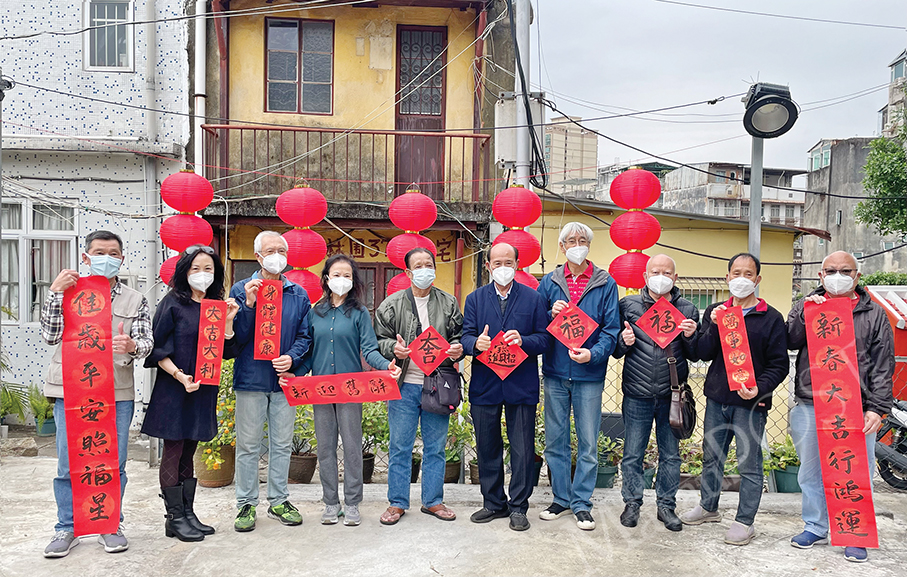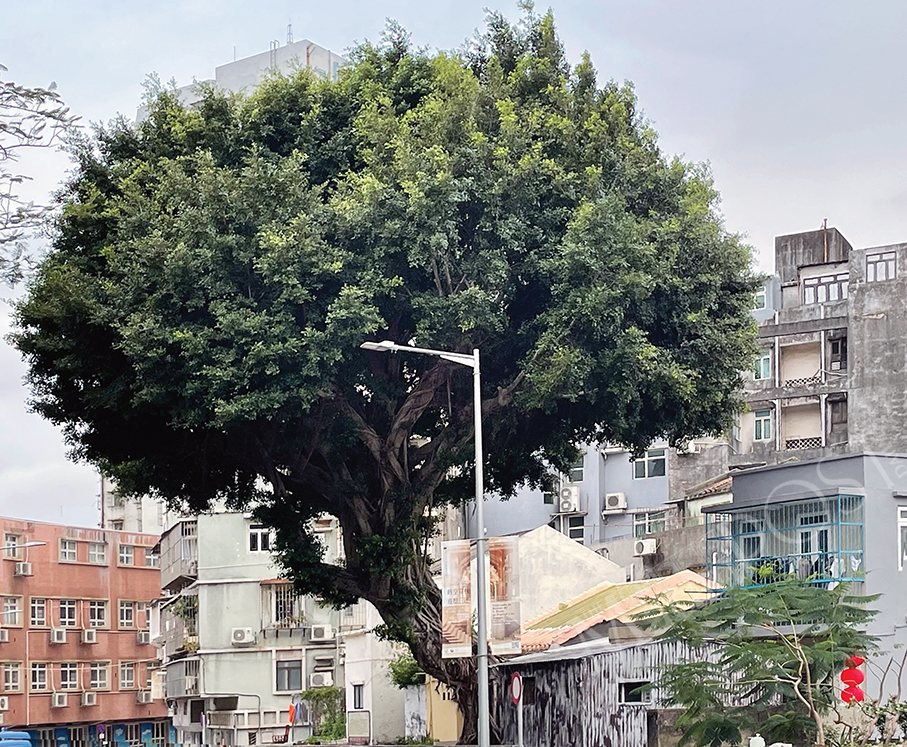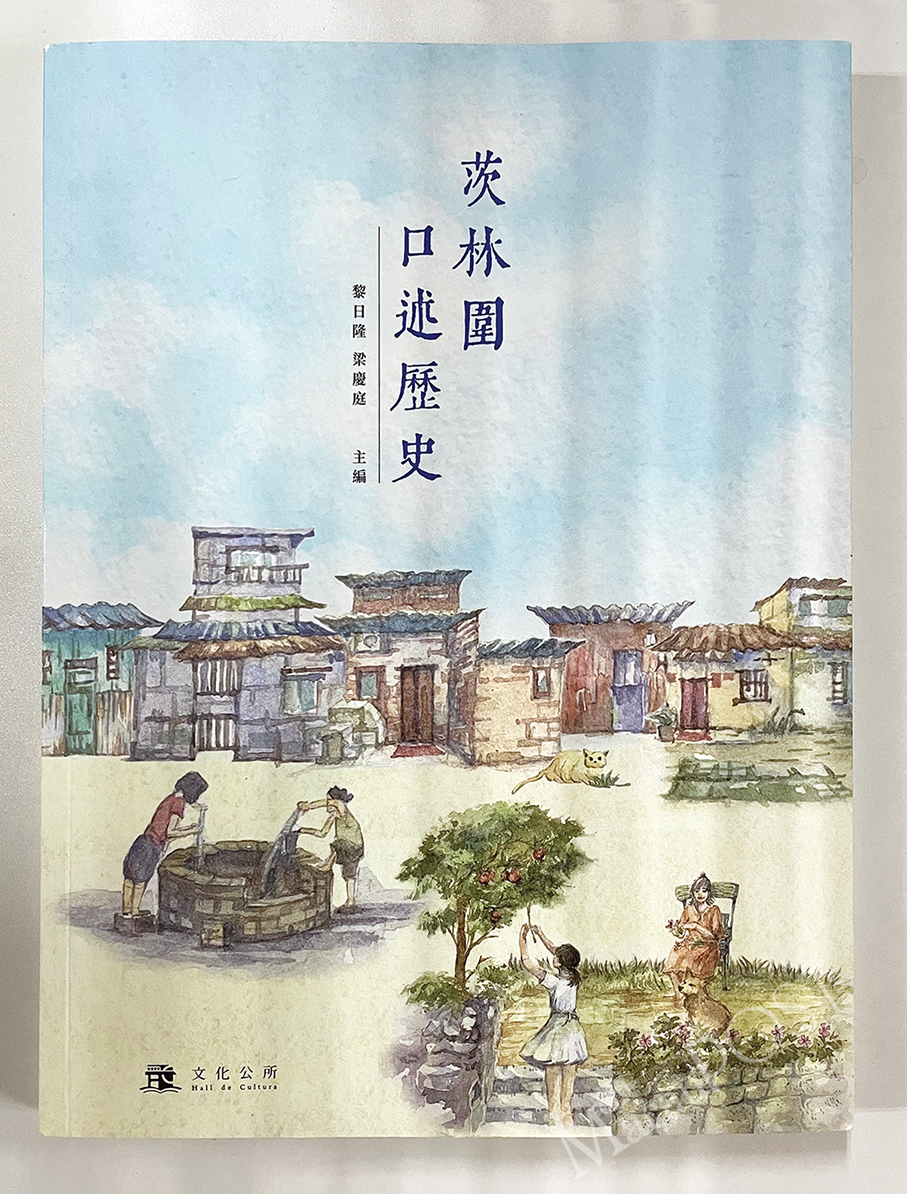The local Hall de Cultura (文化公所) publishing house released a Chinese-language book with the title “Pátio do Espinho Oral History (茨林圍口述歷史)” last month, aiming to recall the history of the area through in-depth interviews with more than 20 former residents of the courtyard, so that its community style, historical importance and cultural connotation are once again brought to the focus of public attention.
“Espinho” means “thorn” in Portuguese. However, the courtyard’s name refers to the planting of potatoes by Japanese who lived there some four centuries ago.
According to the CITY GUIDE website, the patio is actually an ancient walled village in the Macau peninsula with a history of nearly 400 years, where Catholic Japanese used to live.
The book project, which was co-organised by the Pátio do Espinho Residents’ Concern Group, Macau Community Construction Promotion Association and the Oral History Association of Macau, was co-edited by Alex Lai Iat Long and veteran community leader Leong Heng Teng. The book’s illustration was done by Inês Chan I Lei.
Leong, 76, was interviewed by The Macau Post Daily on Sunday in a restaurant in Pátio do Espinho behind the Ruins of St Paul’s.
Leong said that in past 30 to 40 years, with the development of Macau’s economy and the improvement of the environment, most of the area’s residents have moved out, with only some senior citizens still living there, adding that due to the ageing of the area and environment, as well as the impact brought about by history with many houses having no tap water and electricity supply, most of them are empty now. Consequently, the neighbourhood “is dying” gradually, Leong said.
Leong, who initiated the project, said that he had used “three periods of love” in the book to describe the serendipity between him and Pátio do Espinho in different ages – “Love Story in the Sixties to Seventies’’, “A Legislator’s Concerns about Residences in Macau in the Nineties”, and “Neighbourhoods’ Continuous Expectations after Macau’s Return to the Motherland”, adding that Pátio do Espinho residents initially expressed the desire to revitalise their neighbourhood in the nineties, however, they could not do much at that time.
But Leong, a former legislator, pointed out that residents’ desire have never changed even though the years passed, and therefore, after stepping down from his official position, he went back to the area that he was familiar with and loved – Pátio do Espinho, and formed a residents’ concern group with a number of its former dwellers to protect and build a good community there.
Leong said that the book is like a reflection of that small community’s existing problems, however, its main direction is to express the hope to protect the area’s original appearance, as well as its ecology, adding that rather than to just rebuild that particular neighbourhood, people should also explore its cultural characteristics and strive to maintain them, especially the patio’s “warmness and friendliness”.
In the book, various interviewers expressed strong emotions about the former residents’ stories, such as about the place where they were born and grew up, Leong said, pointing out that the interviewers’ main feeling was that in the past the patio was a warm, friendly, and emotional place, which was an unforgettable experience for them. Leong added that each interview was originally planned to last only about an hour, but which turned out to finally last for two to three hours.
Leong pointed out that although the book mentions him as one of the editors, its “real authors” are Alex Lai Iat Long and the various interviewers, as well as the former residents who shared their stories, adding he hopes that after the book was published last month, more people will know more about Macau, while the government and civil society ought to pay more attention to the area and to revitalise it one day.
Through the book, “our Chinese culture or the tradition of our Chinese region is presented”, Leong said, adding that much of the “excellent” Chinese culture is very worthwhile to everyone. The warmth emanating from the city’s older areas seems “so ordinary”, but is deeply rooted in people’s hearts, Leong concluded.

Leong Heng Teng (third from left), an editor of the “Pátio do Espinho Oral History” Chinese-language book and some former residents pose with red banners that they wrote, on Saturday in Pátio do Espinho. – Photos: Yuki Lei


These photos taken on Saturday show facilities and a tree in Pátio do Espinho.

This photo taken last night shows the book’s cover with illustrations.




